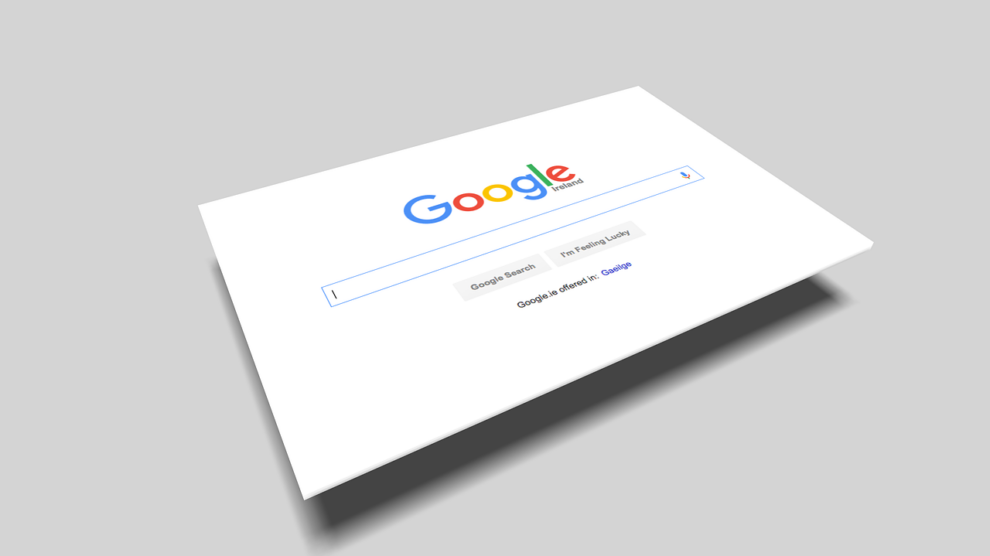Google AdSense is a platform that allows publishers to earn money by displaying ads on their websites. There are different types of bids, some more valuable than others- it’s essential to understand what they do to strategically place your ad placements accordingly.
Google adsense displays programmatic ads based on a publisher’s website audience and content. This works with a real-time auction where advertisers who use google ads submit bids for which ad should show up in front of the publisher’s audiences, and odds are whoever has the highest bid wins.
Sounds easy enough! However, unlike other traditional platforms like Facebook or LinkedIn, there isn’t any targeting available here–only what you place on your site yourself will ever appear in front of your visitors unless you want to pay extra for more specific placements (which we recommend).
There are 4 different types of bids in Google AdSense. These include:
- Cost-Per-Click (CPC) for when a visitor clicks on an ad.
- Cost Per Thousand Impressions (CPM) is the price you will pay per thousand impressions your advert displays to viewers.
- Active View CPM is the cost per thousand impressions from ads with video or mobile formats.
- Lastly, Cost Per Engagement(CPE).
What does each type have in store? Let’s take a look!
- CPC (cost-per-click)
Publishers get charged each time a user clicks on an advertisement. The price of a click is determined by how attractive your ad inventory is to advertisers and how much they’re prepared to pay for it.
- CPM is a cost-per-thousand impression)
Advertisers set their bids for 1000 ad impressions on a CPM basis. The publisher earns revenue each time an ad is served and viewed by a user.
Google AdSense enables both CPC ads and CPM ads to compete to maximize the amount of money they make off of advertisements based on which will generate the most earnings from viewers who click them.
- CPE (cost-per-engagement)
With this model, advertisers select a specific action that the visitor should perform and only pay if that action is completed.
For example, in this scenario, an advertiser may decide to pay when a user hovers over a rich media expandable ad for at least two seconds.
- CPM for Active View (Active View COST-PER-THOUSAND impressions)
Publishers get paid for viewable impressions, defined as at least 50% of the banner is visible for at least 1 second.
Publishers only get 68 percent of the ad income from sold impressions in each bidding type, with Google getting the rest.
What is the Difference Between Cost-per-click (CPC) Bidding and Cost-per-view (CPV)?
A CPV is bidding that advertisers use for video ads, where they only pay when someone views their ad for more than 30 seconds. On the other hand, CPC bidding uses a model in which advertisers pay every time someone clicks on their ad. The ad doesn’t have to be a video advertisement; it can also be an image or text link like in Google Adwords or social media platforms such as Facebook Ads. If you’re having trouble in creating your ad, then these AI tools can help you with it.
What Bidding Strategy Would be the Most Profitable One?
CPC is the dominant bidding strategy on Google AdSense with the highest ad revenue potential.
The second-highest earning type of bid in Google Adsense, CPM, has some drawbacks that come from not being able to sell your ads for as much because there’s only one demand partner (Google). Remember that earnings will depend on how high your CTR is and what value audience you have.
The CPC model delivers the best results if CTRs are over 1% and don’t fluctuate. However, suppose they’re low but valuable. In that case, CPC will outperform CPM even though it might not bring all clicks guaranteed and unrecognized value of impression, which is more likely to happen in a CPM setting where images aren’t guaranteed too.
To reduce the risk of bidding too high with an unknown audience and low click-through rate, Google also bids at lower prices for clicks on keywords where it is uncertain whether these clicks will convert. In other words, they are trying to bid as cheaply as possible when converting traffic is not guaranteed.
When conversion rates are higher, and there is a valuable target audience, the cost per thousand (CPM) can be even more volatile for Google.
Techniques Google Adsense Optimization
The process of modifying to increase the quality of your site is known as optimization and traffic on your site and performance with AdSense. Depending on what optimization goals you have in mind, this may mean modifying either your website or ad implementation. Optimizing can help grow your AdSense revenue, improve usability for visitors to a page and get more traffic (links), etc.
Below are tips about how to optimize ads or build better sites:
1. Using Smart Pricing to Increase CPCs
The Google AdSense Smart Pricing algorithm has many publishers terrified. This algorithm ensures that advertisers get their money’s worth when advertising on the publisher network. Whenever possible, Google will track conversions for these advertisers, and websites that bring in better conversion rates will receive higher bids from this aggregator.
However, we only see clicks but not conversions. As a result, we cannot target specific ad categories or bid specifically on certain types of products/advertisers like other platforms allow us to do. You CAN make your site valuable by employing several tactics- this might result in higher quality bidders with much more competitive bidding prices than before.
Google’s Smart Pricing isn’t new. It has been around for 9 years, and that is the length of time publishers have tried to work out how to hack it. For the most part, it is about audience quality, and its engagement with ad-clicking can be lovely. Still, if people click without becoming clients, many advertisers see this as a lost investment over time.
To make Google’s Smart Pricing work for you instead of against you, block unprofitable categories or place your ads in places with no accidental clicks that lead to traffic that converts into clients-not. These just cheap views don’t turn into customers who convert.
But how do you know what traffic will convert? It would be best if you reversed engineer’ the customer journey by providing content tailored explicitly for parts of them like reviews on websites; products are often given positive feedback because they are well-liked, so review websites will likely score highly when faced with intelligent pricing algorithms due to their high CPCs (cost per click).
2. Fix Invalid Google AdSense Traffic
“Invalid click activity” is defined as “any clicks or impressions that may artificially increase an advertiser’s costs or a publisher’s earnings,” according to Google. This includes clicks or impressions created by a publisher clicking on his commercials, a publisher promoting clicks on his advertisements, automated click tools or traffic sources, and robots (or other deceptive software). The advertiser will not be charged.
Despite Google’s assurances that they have clever technologies and a dedicated team to safeguard advertisers from unethical publishers (they don’t explain what you might be doing), we find ourselves coming back in touch with this again.
If you keep getting invalid traffic, that’s a sign of issues with your website, and Google will penalize you.
So what can you do?
Well, for starters, avoid low-quality traffic sources. If this is not possible, verify implementation and don’t click on ads! ! Scammers, on the other hand, find ways to get around these. Thus Google keeps its tricks hidden (although some educated guesses are there).
Meanwhile, honest publishers like yourself get hurt, but enough with the lamentations and onto solutions. For example: make sure to balance content versus ads as this may affect your audience of returning users; also, keep an eye on social media traffic – google AdSense does not approve.
And secondly, if it comes from search engines or pages, they reach through it. Google prefers viewers coming from those means only. They despise paid traffic that isn’t routed through the platform from where it originates—for example, paying for a post on Facebook or a retweet by bots.
Last but not least – contact Google. If you’re doing nothing wrong and the traffic is real, legit, and clicking? You might be being targeted with click bombing from your competitors.
3. Blocking the Categories
Blocking by category would pressure your website and is an excellent way to increase performance. With AdSense, there are three types of ad blocks: Safe, Limited, and Risky.
Safe ads will generate more revenue for most websites because they do not require any additional settings or special attention from website owners instead of limited and risky ads, which need manual adjustments depending on the type of content being published. advertisements for all visitors to your page- an optimistic point of view! But let’s get real for a second: allowing all available categories in AdSense.
You might be increasing competition amongst advertisers over the audience you receive. Still, this may also lower RPMs if too many different promotions
run at once without sufficient marketing budgets (CPC). Still, questioning how category blocking/unblocking could affect profits? The main question here is – how do you maximize profit with each type?
Higher RPMs result from high CTP (CTR) and higher CPV (CPC). One cannot function without the other; if some categories have great-looking CTP with bad-looking CPC, we know this is wrong for our targeted audience as we saw low revenue instead of impressions under “Allow & Blocks Ads.”
Look at which ad category has many impressions but low income to create an effective block list by blocking these categories temporarily until you can find the best fit that leads to more conversions.
After evaluating what works best through reporting features found on “Allowing Ads” like countrywide screenshots or global reports from all areas.
Conclusion
Google AdSense is a programmatic advertising platform that allows publishers to monetize their websites.
Ads displayed on the publisher’s site are based on that specific website’s audience and content. Google runs an auction where advertisers who use Google Ads bid for ads to decide which ad will appear, with the highest bidder winning.
Google AdSense is perfect for small-medium publishers (100k monthly visitors). It is simple to set up and does not necessitate any technical experience, and there is no fee required to join! However, its CPC model may leave potential revenue opportunities behind due to low CTR or the value of your audience being too low.





